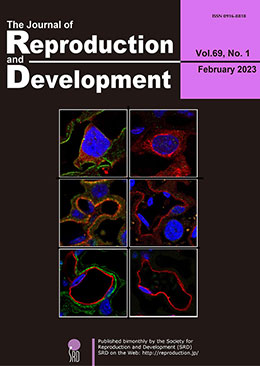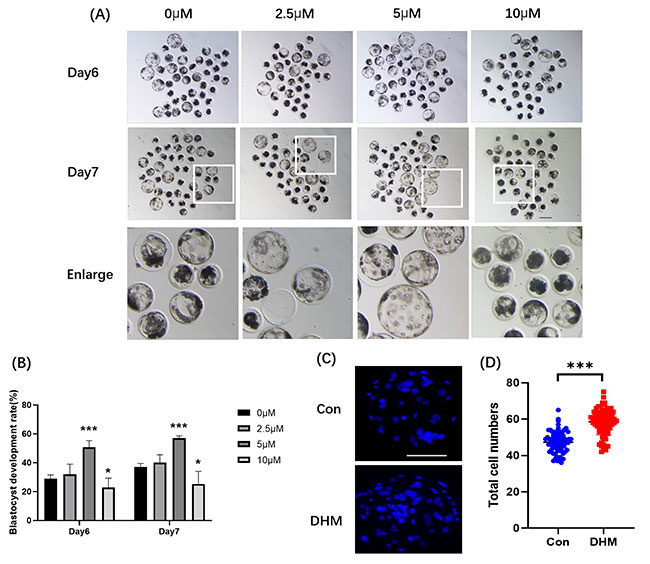- |<
- <
- 1
- >
- >|
-
Article type: Review
2023Volume 69Issue 1 Pages 1-9
Published: 2023
Released on J-STAGE: February 08, 2023
Advance online publication: November 26, 2022Download PDF (8676K)
-
Article type: Original Article
2023Volume 69Issue 1 Pages 10-17
Published: 2023
Released on J-STAGE: February 08, 2023
Advance online publication: November 19, 2022Download PDF (3334K) -
Article type: Original Article
2023Volume 69Issue 1 Pages 18-24
Published: 2023
Released on J-STAGE: February 08, 2023
Advance online publication: November 30, 2022Download PDF (6514K) -
Article type: Original Article
2023Volume 69Issue 1 Pages 25-31
Published: 2023
Released on J-STAGE: February 08, 2023
Advance online publication: December 02, 2022Download PDF (1288K) -
 A possible function of Nik-related kinase in the labyrinth layer of delayed delivery mouse placentasArticle type: Original Article
A possible function of Nik-related kinase in the labyrinth layer of delayed delivery mouse placentasArticle type: Original Article
2023Volume 69Issue 1 Pages 32-40
Published: 2023
Released on J-STAGE: February 08, 2023
Advance online publication: December 24, 2022Editor's pickCover Story:
Nik-related protein kinase (Nrk) is an X-linked gene encoding a serine/threonine kinase belonging to GCK group 4. Nrk-knockout (Nrk-KO) mice exhibit delayed delivery. However, the mechanism of delayed labor remains largely unknown. Yomogita et al. found that serum progesterone (P4) and placental lactogen (PL-2) concentrations during late pregnancy were higher in pregnant females with Nrk-KO conceptus than in wildtype females (Yomogita et al. A possible function of Nik-related kinase in labyrinth layer of mouse placentas of delayed delivery. pp 32–40). These findings suggest that Nrk-KO mice exhibit delayed delivery due to the increase in P4 concentrations because of PL-2 hypersecretion. Moreover, Nrk was expressed in trophoblast giant cells and syncytiotrophoblast-2 (SynT-2) in the labyrinth layer of the mouse placenta. In the human placenta, NRK is expressed in Syn-T of villi. Similar to mouse Nrk, human NRK may significantly affect placentation in evolutionary biology.Download PDF (2855K) -
Article type: Original Article
2023Volume 69Issue 1 Pages 41-47
Published: 2023
Released on J-STAGE: February 08, 2023
Advance online publication: December 18, 2022Download PDF (1053K)
-
Article type: Technology Report
2023Volume 69Issue 1 Pages 48-52
Published: 2023
Released on J-STAGE: February 08, 2023
Advance online publication: December 16, 2022Download PDF (1113K) -
Article type: Technology Report
2023Volume 69Issue 1 Pages 53-55
Published: 2023
Released on J-STAGE: February 08, 2023
Advance online publication: December 12, 2022Download PDF (662K)
- |<
- <
- 1
- >
- >|







